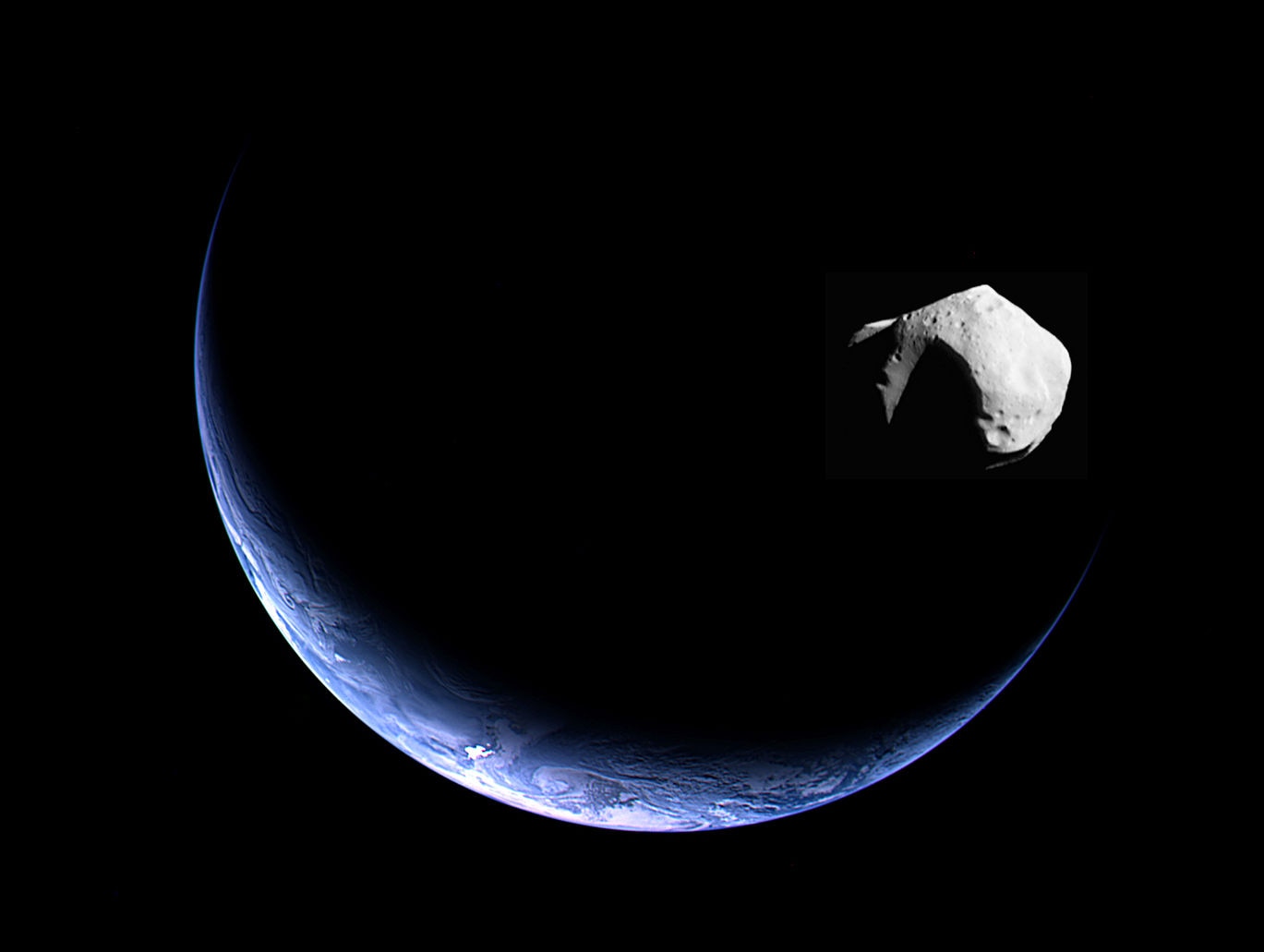Create a free profile to get unlimited access to exclusive videos, sweepstakes, and more!
On Friday, a small asteroid passed just 400 km from Earth!

Well, yikes: On Friday (13 November 2020), a small asteroid passed so close to Earth it was barely above our atmosphere: It came about 400 kilometers (240 miles) from Earth's surface!
That's lower than most satellites, even low-Earth orbit ones. Yegads!
The good news is, it's so small that even if it had hit us it wouldn't have been bad, and almost certainly would've burned up in our atmosphere.
The asteroid, initially called A10sHcN and then officially renamed to 2020 VT4, was discovered by the ATLAS (Asteroid Terrestrial-impact Last Alert System) observatory in Hawaii. It was first seen about 15 hours after it passed Earth, which is common. Many times, the geometry of the pass makes it difficult to see before it gets to closest approach.
The asteroid came in from the east and passed an incredible 6,772 km from Earth center, above the Pacific Ocean. Accounting for Earth's radius of 6,371 km, that means it passed only about 400 km above Earth's surface.
!!!
Amazingly, this isn't a record. Many meteors have been seen to pass through the Earth's upper atmosphere and go back out into space, like the the Great Daylight Fireball of 1972 which got as low as 57 km above the ground (and which lost a substantial amount of mass as it did, leaving behind a vapor trail easily seen during the day). Others like this have been seen as well.
But in recent years, with modern equipment, more near-misses are being recorded. In August asteroid 2020 QC passed 3,000 km from Earth's surface, and in May 2020 JJ passed 7,000 km away.
So, if you don't count asteroids that temporarily (or permanently) become meteors — or actually hit the ground — 2020 VT4 is a record breaker.
From its brightness the size is roughly 5–10 meters. At the top end, that's about half the diameter of the Chelyabinsk impactor from 2013. For a given composition (say, rock), the mass of an asteroid depends on its volume, which itself depends on the cube of the radius. Since 2020 VT4 was at best half the diameter of Chelyabinsk, it would've had about 1/8th the mass. At the low end it would've had only 1/50th the mass.
The Chelyabinsk impact had an energy yield of half a megaton of TNT. If 2020 VT4 had hit it would've been 2–10% as much. Easily visible even during the day, but still most likely would have burned up 50 or so kilometers above the ground. It's big enough that small pieces could've hit as meteorites, which is cool. But, remember, it didn't hit.
The shape and geometry of its orbit changed quite a bit due to Earth's gravity from such a close pass. It used to have a 1.5-year period, but now has one just less than 0.9 years. The semimajor axis of its orbit (half the long diameter of an ellipse; think of it sorta like the average distance from the Sun) changed from 195 million kilometers to 136 million. The Earth's average distance from the Sun is 150 million km, for comparison.
The orbit used to stretch from just inside Earth's orbit out to just past Mars. Now, it goes from the orbit of Venus to just outside Earth's orbit. That's an amazing change!
I'll note, as I always do, that asteroids this size pass us pretty frequently, but only hit us on the decade or so timescale. Small ones, a meter across or so, hit us once a month! But of course they disintegrate way up in the atmosphere. Also, the Earth is big and mostly water, which is why you don't hear much about them.
So for me this whole thing is good news. Spotting an asteroid this small is hard — they're faint, and moving fast in the sky — and every time we see another one it means we're getting better at spotting them. They're out there whether we look or not, so I prefer we look! Soon, as bigger and better telescopes go online, we'll get more warning, better orbital predictions, and maybe, if we see one big enough to do real damage, we can actually do something about it.



























